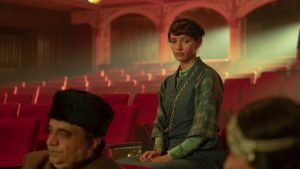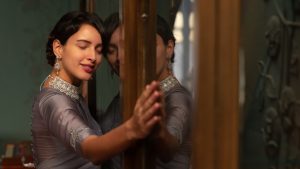The Qala of Costumes https://ift.tt/oZrRC4l
The allure of films with perfectly etched characters and captivating music always has a deep-rooted sensorial impact. Fashion and cinema have formed a refined connection over time, and we find that the role of a costume designer goes beyond dressing the actors. Their work creates a visual spectacle for the audience to be viewed as an integral aspect of filmmaking. One such designer is Veera Kapur, whose work you’ve appreciated in films such as Piku, Pink and Bulbbul, among others. “Costume intertwines with the characters and helps filmmakers to push the narrative forward,” the award winning designer shares.
View this post on Instagram
Kapur’s most recent work is in Anvita Dutt’s directorial period drama for Netflix, Qala, which has won accolades for revisiting the glorious fashion aesthetics of the 1920s and ‘30s. The gossamer-like ethereal drapes worn by the protagonist Qala Manjushree(Tripti Dimri) have found their way into all fashion discussions. In an exclusive conversation with Kapur, we dive deep into the sartorial nuances of the film, the character arc through costumes, and her creative process.
RITE OF PASSAGE
Kapur started her career as an assistant to Shoojit Sircar in 2003 and worked in various departments of filmmaking, including costumes. While working on Sircar’s debut film Yahaan in 2005, she realised her true calling in costumes. Her transition and entry as a costume designer was Vicky Donor in 2012. Kapur couldn’t stress enough on the paradigm shift in the outlooks of audiences and filmmakers alike when asked about the evolution of costume in Indian cinema. “With the audience being more detail-oriented, an impeccable portrayal of characters and period have become intrinsic to filmmaking. Makers are focused on styling and colour palettes to replicate the mood and period of the film or series. For instance, while working on the film Sardar Udham, we got hold of an image of Udham Singh at langar seva wearing a sweater. I visited the garment factories in Ludhiana and got the same sweater made. Details like these give me creative satisfaction.”

When asked about the method to her madness, Kapur shares, “I start with reading the script and discussing it with the director. It helps to visualise characters and understand their backgrounds. Next, I reference and study images of people from similar backgrounds. All of these minute details work in harmony to create the final look.”
INTO THE WORLD OF QALA
The delicate and ethereal organza saris with intricate zardozi work worn in the film Qala depict the feminine elegance and understated style of the pre-independence era. Each sari was handmade in Lucknow and featured deconstructed moth motifs in the film. The colour grey plays an integral part in the narrative as the characters experience varied emotional complexities.
Kapur highlights, “Anvita Dutt is one of the most creatively involved directors I have worked with. She made the journey easy for me with her profound knowledge of fabrics, textures and colours. The moth was a significant symbol that Anvita wanted to use in the film. We decided to gradually grow the moth as Qala grows in her life too. So, we started with one wing for some saris and later added two wings. There were also a few with small moths and then a bigger moth motif, followed by dragonflies. We collaborated with Lucknow-based brand Anam Cara by Yasmin, known for the finest zardozi work in the country. Yasminji worked on every moth motif with zari using different thread sizes and shades of grey as we moved from lighter to darker tones.” We observe that Qala wore a simple off-white organza sari as she started her career as a singer and then progressed into shades of grey to portray the essence of her journey. “Every detail has a story behind it. I sat with Anvita and developed each one of these elements.”

The other notable characters in Qala’s life are her mother, Urmila Manjushree, played by Swastika Mukherjee and Jagan, played by Babil Khan. Urmila is a widow from the hills and is seen in traditional Baku in dark colours. “Widows in the hills don’t wear light colours and gold jewellery. Urmila wears black and deeper brown. Some of her traditional silver jewellery was sourced from Shimla and Manali. The neck hasli was made by a jeweller in Bombay. Qala and Urmila were from an affluent upper-class family, and it was highlighted through rich fabric, texture, woollens and tweeds. Jagan was introduced in the film as a singer from the gurudwara, and we kept his look simple with a pathani suit paired with a tweed jacket.”
THE BIG PICTURE
Kapur feels nuanced and collaborative approach towards costume has a larger impact than what meets the eye. “To begin with, the use of local craftsmanship and handlooms in Indian cinema will not only revive artisanship in our country but also drive global recognition for the same. Many people have reached out to Yasminji for organza silk saris, fondly referring to them as ‘Qala-saris’,” she shares smilingly. Kapur is excited about the prospect of exploring different periods through her upcoming projects. “I am working on a film and an untitled web series. The show is based on espionage. I want to explore everything when it comes to costume design,” she signs off.

from Elle India
Comments
Post a Comment